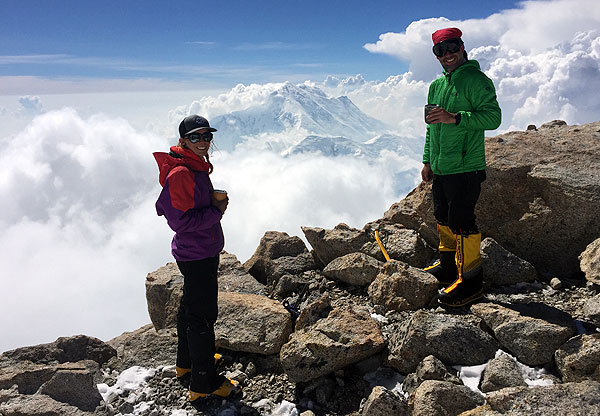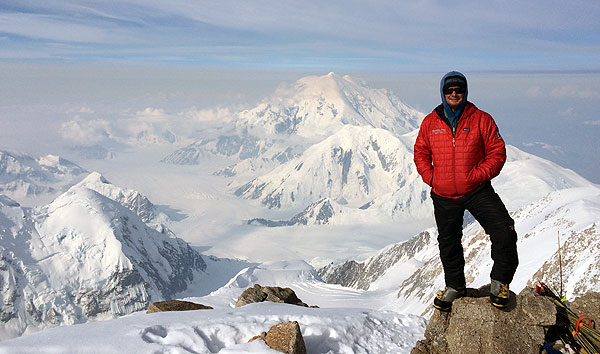Communication
We can’t stress enough the importance of keeping open and effective lines of communication. Let your guides know how you are feeling each day. Always let them know if you are taking, or have started taking, any medication or herbal supplements. Often, minor situations become crises that otherwise could have been mediated early on, if we knew about them!
-Got a hot spot on your heel? Tell us- don’t let it become a blister.
-Are those fingers so cold that you’ve lost sensation in them? Tell someone! Pull on your hat – get those mittens on – pop in some handwarmers – swing your arms to increase blood flow to your hands – shrug your shoulders up to your ears and let your hands drop quickly down to your sides – add another layer to your torso or head – TELL SOMEONE!
-Sweating so much that it is running into your eyes? STOP! Shed a layer and tell your guides so they can help ensure that you remain adequately hydrated. If you do a little prep work, the amount of time it will take you to shed a layer will be minimal, so before you ask that the rope team stop, unzip your jacket, take your gloves off, and try to be as efficient as possible after the team stops.
-Are your feeling poorly, but have not told anyone about that medication your started taking just before your trip? Tell your guides. Maybe you forgot that Amoxicillin is really the same as that Penicillin you are allergic to! (A true, very scary story…)
Take care of yourself
Communication is an integral part of this, but you should take an active part in your own well being by keeping yourself hydrated and fed. Some days you’ll not have much of an appetite, but it is still important to try to get some fuel in your system. Take your guide aside and maybe he or she will have something else to offer you that might go down easier.
It is on the equipment list, but please be certain that you toss a small bottle of hand sanitizer in your toiletry kit and at minimum, use it before every meal and after “taking care of business.”
Try to anticipate how warm or cold it will be when you start hiking and dress accordingly. Starting out on the trail feeling slightly chilled is a good rule of thumb for not overheating on the big hill up ahead. If you’re uncertain, ask a guide what he or she is going to wear. You’ll see plenty of folks hiking in the hot sun on the lower glacier, dressed head to toe in Gore-tex. The theory seems to be that they are dressed for a potential crevasse fall. If you have a puffy layer in the top of your pack, you can almost always pull it on, should you find yourself dangling in a gaping maw. We don’t think it’s worth overheating and getting dehydrated by wearing layers unnecessary for the conditions at hand.
Eat and drink at every break while on the trail, and liberally apply sunscreen every hour. Your guides will make a point of reminding everyone to perform these tasks at every break, but if you can be disciplined, you’ll perform a lot better and hopefully not look like one of the crispy, sunburnt “zombies” when you arrive back in Talkeetna. This is especially true on the descent, when it is easy to just want to keep going, like horses headed back to the barn. Stay vigilant and disciplined!




